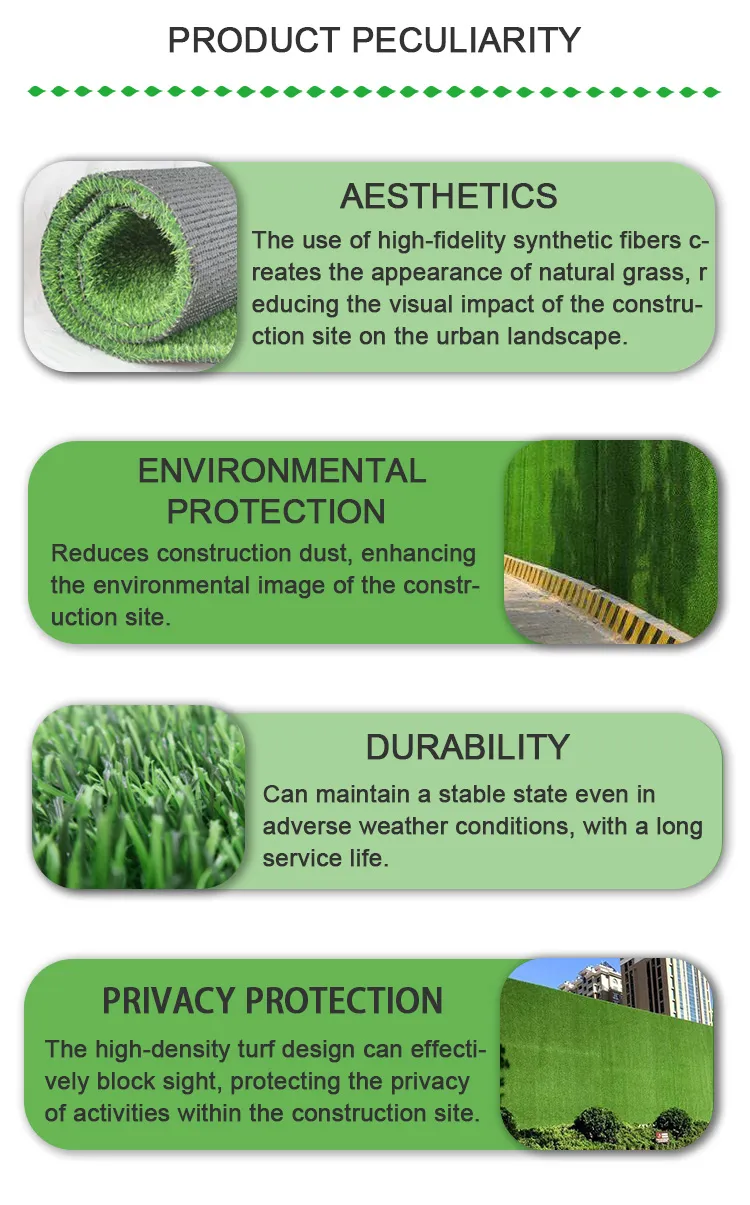
- Afrikaans
- Arabic
- Belarusian
- Bengali
- Czech
- Danish
- Dutch
- English
- Esperanto
- Estonian
- Finnish
- French
- German
- Greek
- Hindi
- Hungarian
- Icelandic
- Indonesian
- irish
- Italian
- Japanese
- kazakh
- Rwandese
- Korean
- Kyrgyz
- Lao
- Latin
- Latvian
- Malay
- Mongolian
- Myanmar
- Norwegian
- Persian
- Polish
- Portuguese
- Romanian
- Russian
- Serbian
- Spanish
- Swedish
- Tagalog
- Tajik
- Thai
- Turkish
- Turkmen
- Ukrainian
- Urdu
- Uighur
- Uzbek
- Vietnamese
Understanding Turf Grass Selection for Soccer Field Construction and Maintenance
Nov . 06, 2024 05:52 Back to list
The Importance of Turf Grass in Soccer Fields
Soccer, known as football outside the United States, is one of the most popular sports in the world, attracting millions of fans and players alike. The playing surface significantly impacts the game, and the choice of turf grass plays a crucial role in ensuring optimal performance and enjoyment for players. This article delves into the importance of turf grass in soccer fields, examining the different types of grasses, their benefits, and maintenance practices.
Types of Turf Grass for Soccer Fields
When it comes to selecting turf grass for soccer fields, two primary categories emerge natural grass and artificial turf
. Both have their advantages and challenges.Natural Grass Natural grass fields are often preferred for their aesthetic appeal and the natural playing experience they provide. Common types of natural grasses suitable for soccer include Bermuda grass, Kentucky bluegrass, and fescue. Bermuda grass is favored in warm climates because of its resilience and ability to recover quickly from wear and tear. Kentucky bluegrass, on the other hand, thrives in cooler temperatures and offers a lush, durable playing surface. Fescue is another excellent option, particularly when mixed with other grass types, as it provides a dense turf and is drought-resistant.
Artificial Turf In contrast, artificial turf has gained popularity due to its low maintenance and durability. Modern synthetic grasses are designed to mimic the look and feel of natural grass, and they can withstand heavy usage without suffering damage. Artificial turf can be used in various weather conditions, making it a reliable option for regions with unpredictable climates. However, concerns about player safety and heat retention continue to fuel debates over its use.
Benefits of Quality Turf Grass
The quality of the turf grass on a soccer field can directly affect gameplay. High-quality turf promotes better ball control, reduces the likelihood of injuries, and enhances overall player comfort. Well-maintained natural grass provides a softer surface that absorbs shock, minimizing the risk of joint injuries. In comparison, poorly maintained or worn-out fields can lead to uneven playing surfaces and increase the chances of slips and falls.
turf grass soccer field

Moreover, turf grass plays a vital role in the environmental health of the surrounding area. Natural grass fields contribute to biodiversity, support local ecosystems, and improve air quality. They also help manage stormwater runoff, reducing the risk of flooding in urban areas. Choosing the right turf grass species can further enhance these benefits, providing a sustainable playing surface for generations.
Maintenance Practices
Maintaining a soccer field's turf grass is essential for ensuring its longevity and performance. Regular practices such as mowing, aerating, fertilizing, and watering are critical. Mowing at the appropriate height helps promote healthy growth and reduces weeds. Aeration improves soil compaction, allowing air, water, and nutrients to penetrate the root zone more effectively.
Fertilizing the field with the right nutrients enhances grass growth, while proper watering ensures that the turf remains healthy, especially in dry conditions. It's crucial to monitor the field's condition throughout the season, making adjustments based on usage and environmental factors.
For artificial turf, maintenance involves regular cleaning to remove debris and ensure optimal drainage. Periodic inspections for wear and tear, as well as infill maintenance, are necessary to keep the playing surface safe and playable.
Conclusion
The choice of turf grass on soccer fields significantly impacts the game, players, and environment. Whether opting for natural grass or artificial turf, understanding the various options and maintenance practices is crucial for ensuring an optimal playing experience. Investing in quality turf grass not only enhances the game but also promotes sustainability and player safety, making it an essential element of soccer culture worldwide. As the sport continues to grow, so too will the importance of well-maintained soccer fields that allow players to excel and enjoy the beautiful game.
-
The Benefits of Artificial Turf for Indoors
NewsJul.15,2025
-
How Artificial Grass Suppliers Ensure Quality Products
NewsJul.15,2025
-
Artificial Grass and Pets: A Space for Relaxation
NewsJul.08,2025
-
Balcony & Outdoor Decoration with Artificial Grass
NewsJul.08,2025
-
Best Indoor Artificial Grass for Home
NewsJul.07,2025
-
Best Pet Turf for Dogs: Safe & Durable Artificial Grass Options
NewsJul.07,2025
Products categories









